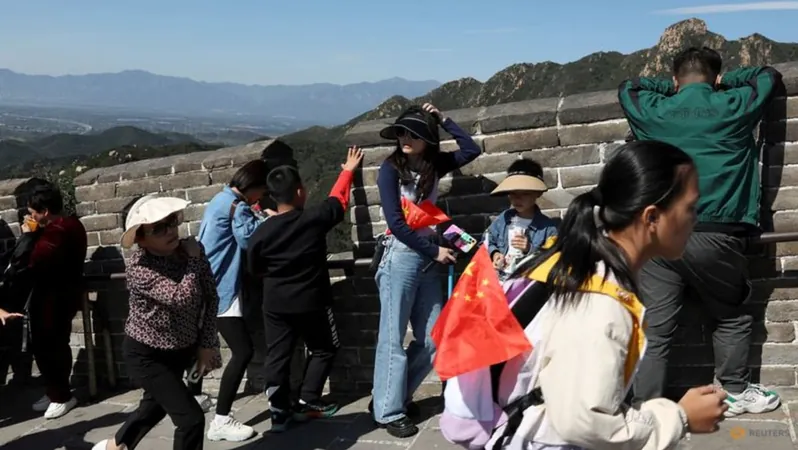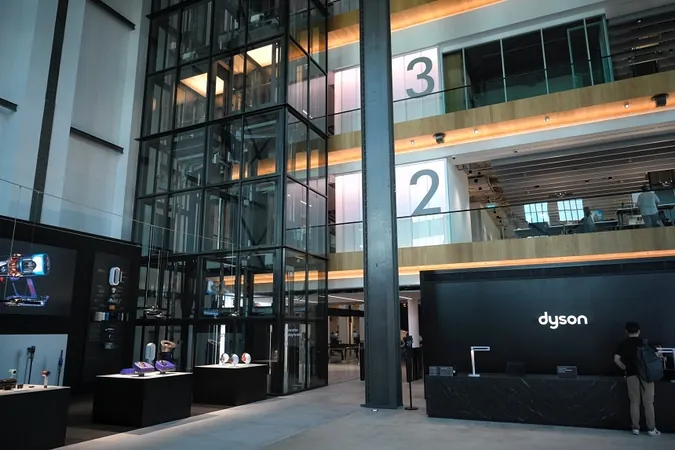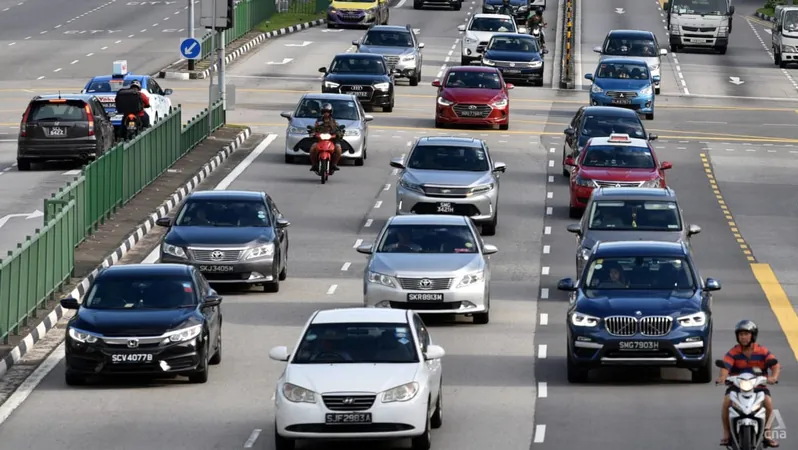
China's Golden Week Travel Shoots Up, But Spending Falls Short Compared to Pre-Pandemic Levels
2024-10-08
Author: Jia
Overview of China's Golden Week Travel Trends
This year's National Day holiday in China saw an impressive surge in domestic travel, eclipsing 2022 numbers, but the spending per person fell short of what was recorded before the COVID-19 pandemic. According to the latest data released by the Ministry of Culture and Tourism, this holiday period showcases a mix of optimism and caution among Chinese consumers.
Travel Numbers and Spending Insights
During the Golden Week, which lasted from October 1-7, a staggering 765 million domestic trips were taken, marking a 5.9% increase from last year. Total expenditures by domestic tourists reached an impressive 700.82 billion yuan (approximately US$99.3 billion), reflecting a year-on-year rise of 6.3%. However, despite this growth in overall travel numbers and expenditures, per capita spending dropped by 2.09% compared to the same time in 2019, based on calculations by Reuters.
Consumer Behavior and Spending Reluctance
The average spending per traveler showed a marginal increase of just 0.38%, aligning with analysts' forecasts, signifying that while Chinese citizens are eager to travel, they seem less willing to spend during their trips. This reluctance to splurge is attributed to ongoing economic challenges, particularly in the property market, coupled with rising concerns about job security and overall income stability.
Cost-Cutting Trends Among Travelers
Interestingly, while the desire to explore and travel has noticeably rebounded—especially during peak holiday seasons—an observable trend has emerged where travelers are opting to cut costs. Social media platforms such as Xiaohongshu are buzzing with posts from users who have taken to packing their own meals for outings, in order to avoid expensive food options at tourist sites.
Dramatic Narratives from the Holiday
Dramatic accounts from the holiday also surfaced on platforms like Weibo, illustrating the lengths some travelers are going to save money. For instance, images from Huangshan Mountain depicted crowds resting on the floor of public restrooms, reportedly to avoid the cost of hotel accommodations.
Popularity of Affordable Attractions
Moreover, affordable sightseeing options have become increasingly popular among tourists. One user shared their excitement about visiting Beijing, highlighting various free attractions like the National Museum, Tiananmen Square, and even prestigious universities like Peking University and Tsinghua University, stressing the low cost of enjoying urban sights.
Implications for Future Economic Trends
As the Chinese economy gradually recovers, this travel data serves as a key indicator of consumer behavior amidst post-pandemic uncertainties. The rise in trips suggests a potent desire to engage with the rich cultural and scenic offerings of the nation—but the hesitance to loosen the purse strings points to a broader narrative of caution in spending that potentially foreshadows future economic trends.
Conclusion on Chinese Tourism Landscape
With many travelers prioritizing budget-friendly experiences, the focus on value will likely continue as a significant driver in the evolving landscape of Chinese tourism.


 Brasil (PT)
Brasil (PT)
 Canada (EN)
Canada (EN)
 Chile (ES)
Chile (ES)
 España (ES)
España (ES)
 France (FR)
France (FR)
 Hong Kong (EN)
Hong Kong (EN)
 Italia (IT)
Italia (IT)
 日本 (JA)
日本 (JA)
 Magyarország (HU)
Magyarország (HU)
 Norge (NO)
Norge (NO)
 Polska (PL)
Polska (PL)
 Schweiz (DE)
Schweiz (DE)
 Singapore (EN)
Singapore (EN)
 Sverige (SV)
Sverige (SV)
 Suomi (FI)
Suomi (FI)
 Türkiye (TR)
Türkiye (TR)